Mayonnaise, also known as mayonnaise (transliteration of French mayonnaise), is said to have originated in Spain. Although normal humans like us don’t eat the whole bowl of mayonnaise, you’ve probably eaten it too…

How is mayonnaise made? Discovery Channel’s How Its Made program revealed the assembly line of mayonnaise, and Nutshell will show you today-
No matter what kind of mayonnaise, the main ingredients are eggs and oil, but the recipes are ever-changing, and each family has its own secret recipe. In the past, mayonnaise only used egg yolks, but now there are also recipes using whole egg liquid. Note , to make mayonnaise, raw egg liquid is used! And a whole tank truck of soybean oil.
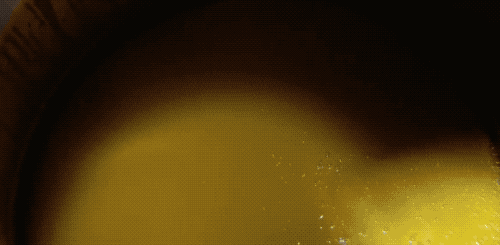
Separate egg white and yolk
Mayonnaise mayonnaise, its body is the egg yolk. Students who have made pastry know that separating egg whites and egg yolks is a very technical step. So how are these egg yolks separated in the factory?
Let’s first introduce two lines for separating egg whites and egg yolks, one small and one large——
Semi-automatic separation line
Manual gadgets are sucked by negative pressure, which is the same as the principle of chuāi.
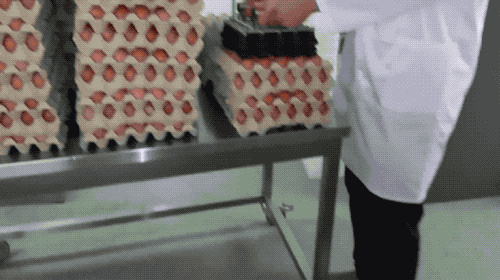
Eggs were lined up one by one and opened one by one.
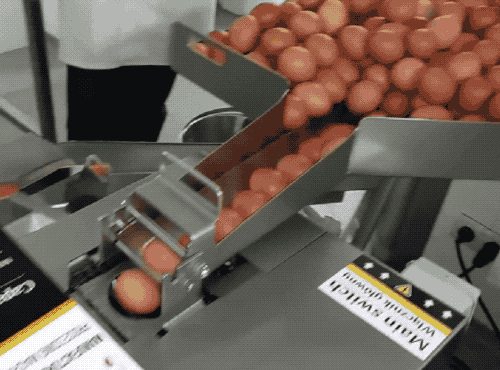
It can be seen that there is a large clip at the bottom, which pushes the egg upwards, and then breaks it on both sides to open it.
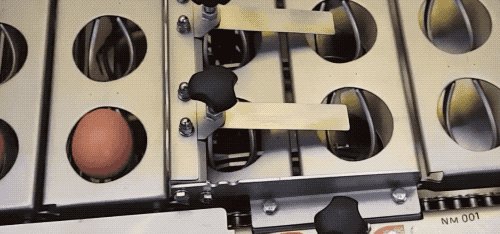
I do not understand? Give you a manual experience:
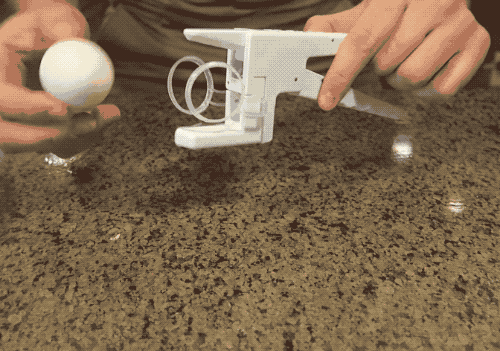
This long V-groove has an opening at the bottom. When the egg liquid flows through, the yolk as a whole is too large and continues to slide forward, and the egg white leaks under the opening of the V-shaped groove.
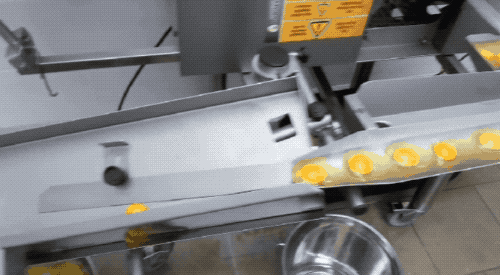
Fully automatic separation line
It is also negative pressure to suck eggs, and the machine is connected to the air pump control.
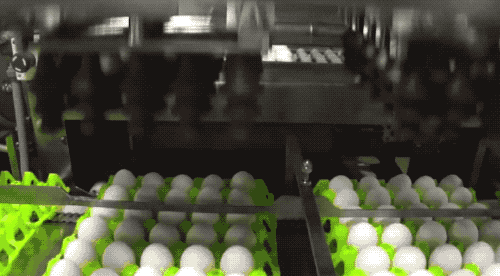
Quick separation. This is the normal speed … don’t worry, there are detailed pictures further down.
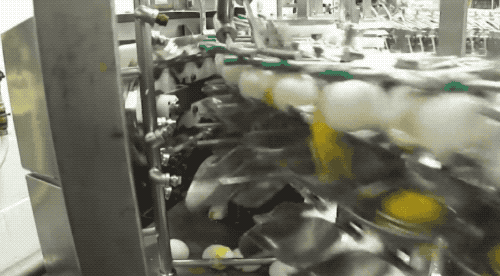
The separation process is integrated into three layers, the first layer opens the egg, the second layer shakes the egg liquid, then the yolk stays in the second layer, and the egg liquid flows to the third layer.
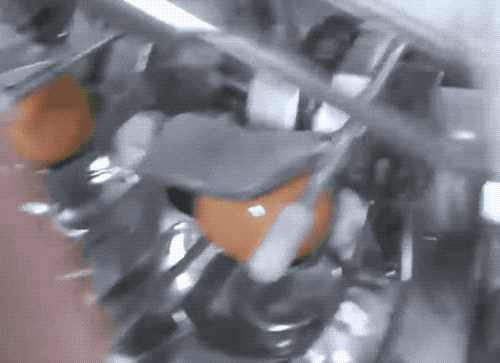
The three-layer assembly line is poured into different places, and the separation is completed.
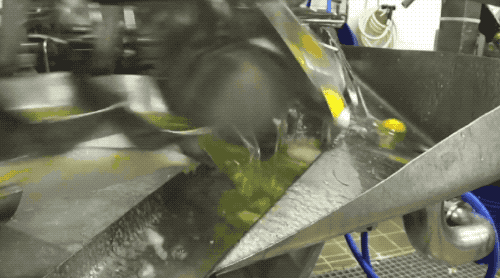
The raw egg liquid obtained in this way is pasteurized – briefly heated at 60-90°C. This kills microorganisms without compromising quality.
Make mayonnaise!
Make the dressing first : Stir together water, lemon juice, white vinegar, apple cider vinegar, salt, and the “secret recipe”.

Then, mix the freshly prepared seasoning paste with the main ingredients: egg liquid and soybean oil , and continue to stir at high speed for two minutes.
This is the most critical “emulsification” process in making mayonnaise, and then the rich mayonnaise is done!

Egg yolk liquid is an emulsifier that connects ingredients of different properties such as moisture and oil. The most important thing is to vigorously beat the sauce for two minutes. The emulsifier can decompose the oil into fine particles, so that the ingredients of different properties can interact with each other. mix. So the final product is a uniform emulsion state.
Next is the sampling of samples. One of the sampling tests is to use phenolphthalein to test the pH of mayonnaise with deionized water.
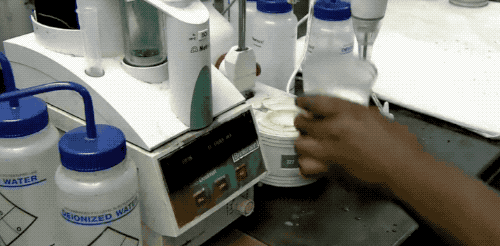
For liquid foods like sauces, quality control is a very important part. Quality inspectors need to regularly inspect the finished products to detect color, viscosity, taste, etc. This is not the only sampling link, there are also sampling after filling!
Let’s fill it up!
The filling lines for liquid food are very similar. The bottom line goes through plastic jars and fills them with mayonnaise. A large 600ml jar can be filled in 0.25 seconds. Looking at so many sprinklers, the output speed is amazing.
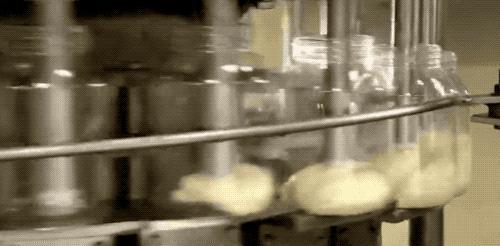
Is it confusing to screw the lid of the machine at 0.7x speed? Me too… This is the stability, accuracy and speed of the assembly line.
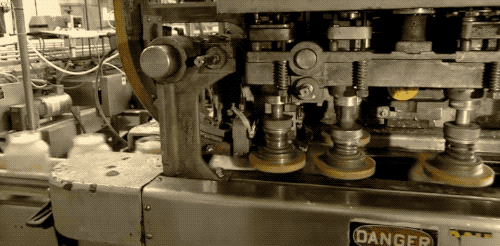
Next is thermal sealing.
The sauces you buy have a layer of aluminum foil sealing film, which is the small round silver cardboard on one side. The assembly line is sealed by induction heating. After screwing the lid on the jar, an induction machine only heats the mouth of the jar, and then sticks and seals the sealing film. The advantage of local induction heating is that the mayonnaise inside will not be scalded. After all, the sauce is easy to deteriorate. of.
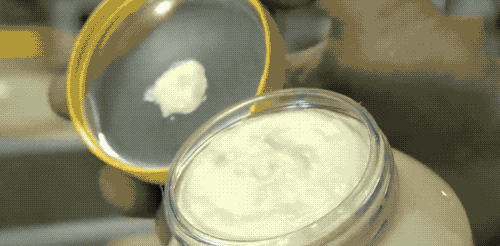
Labeling the machine is very fun. There is glue on one side of the label paper. After sticking to the can, the machine drives the can to turn around, and the label paper is rolled onto the can.
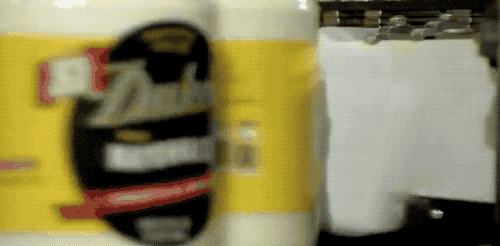
Sampling again!
Sampling is a whole set of procedures, here is a “viscometer” that tests the properties of mayonnaise to test the consistency.
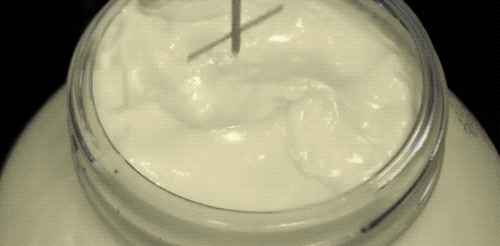
pouch packaging
Mayonnaise in salads or fast food comes in small packages. It is packaged with transparent polyethylene film. The hot-press machine pulls the strip-shaped packaging bag while the filling machine fills 16 grams of mayonnaise, and the hot-press machine seals and then pulls and cuts it.
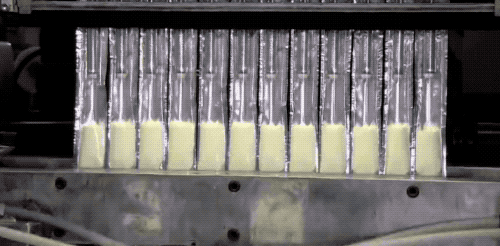
The pull-off transparent packaging bag will be labelled on the other side of the heat press.
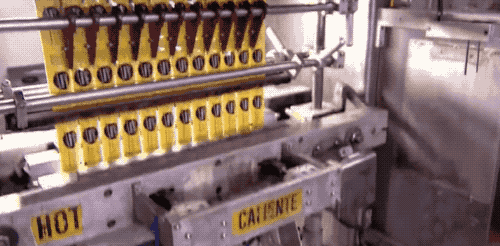
Dangdang~ This is the factory!
Author: Cast title image Source: pixabay
an AI
In addition to the egg yolk is oil, the calories are very high, I wish you a happy eating~
Tomorrow (October 14th) at 17:00, the live broadcast of “Husk, please ask! Biological Science Contest” will start again! Gu Yourong, associate professor of the School of Life Sciences of Capital Normal University, will be the author of this topic, and will take you to increase your knowledge with the million-fan blogger Underground Velvet! At the same time , participate in the interactive comments in the live room and there are surprise benefits to receive! Click the button above to book a live broadcast~

This article is from Nutshell and may not be reproduced without authorization.
If necessary, please contact [email protected]

This article is reproduced from: http://www.guokr.com/article/462391/
This site is for inclusion only, and the copyright belongs to the original author.